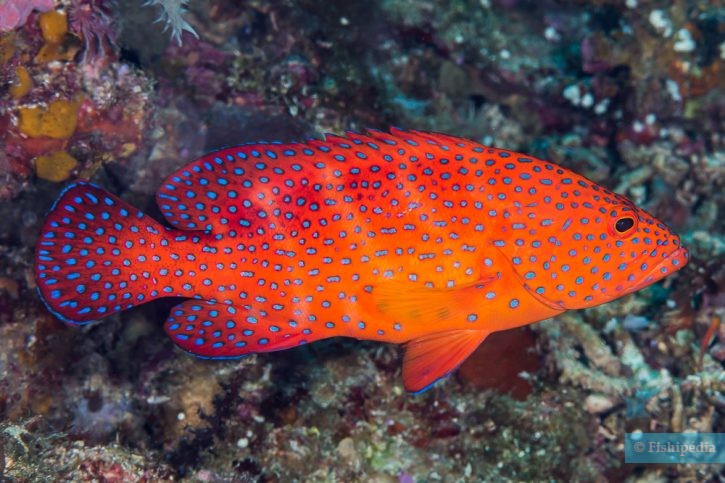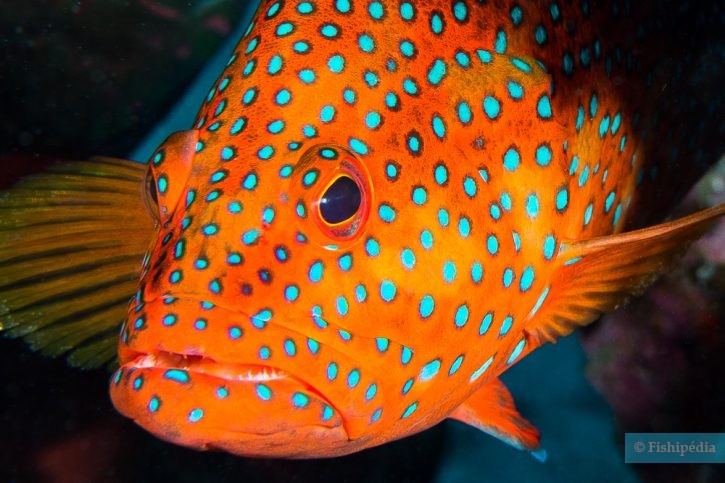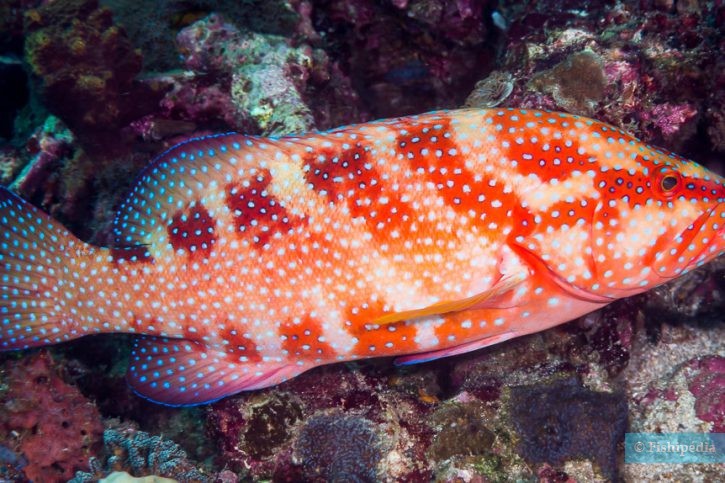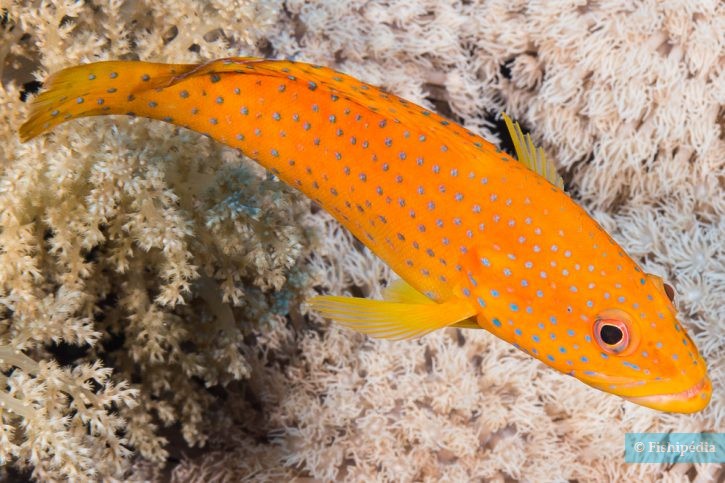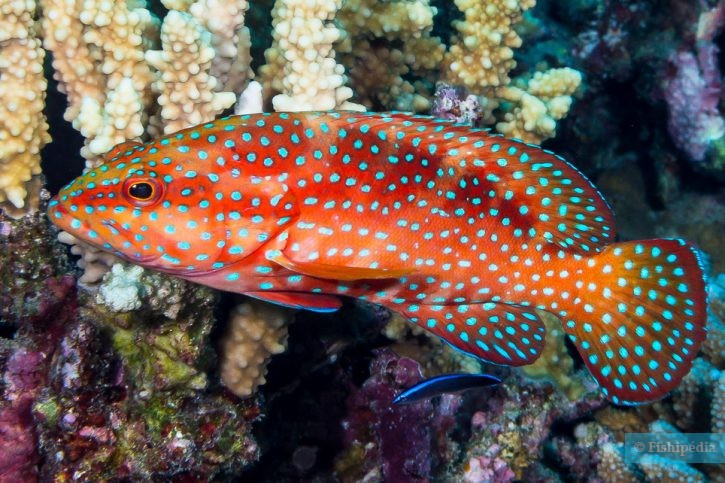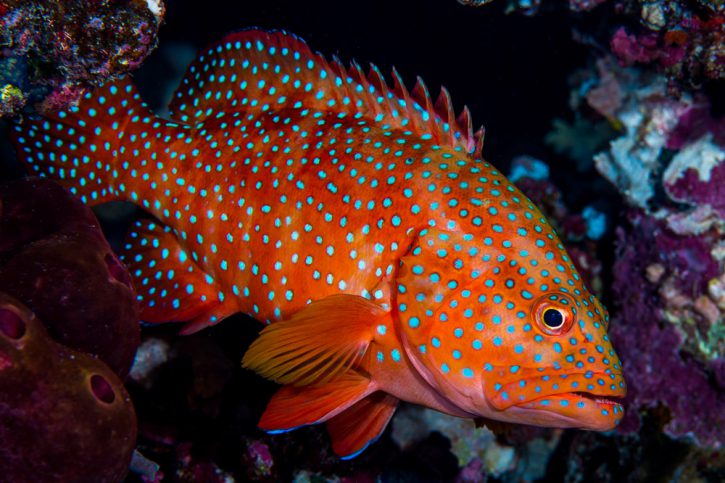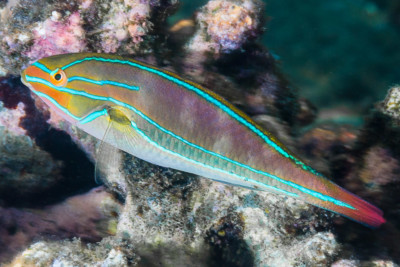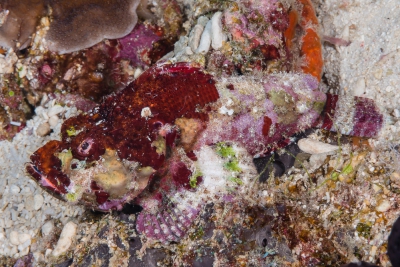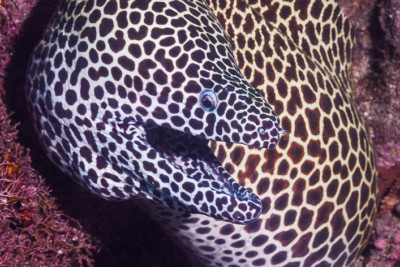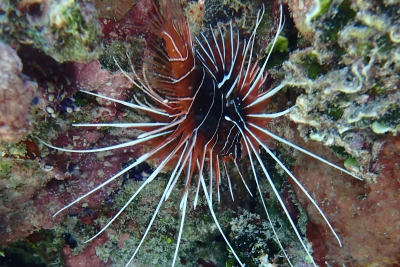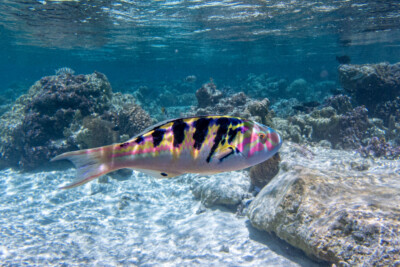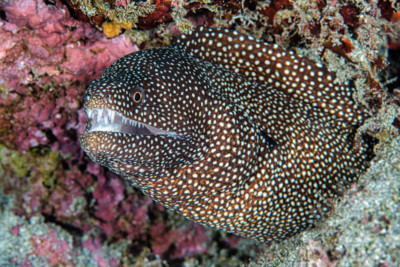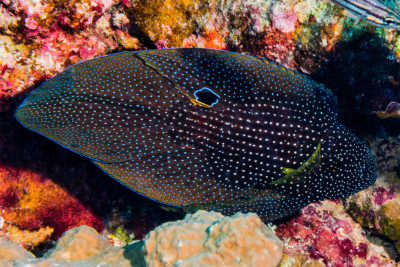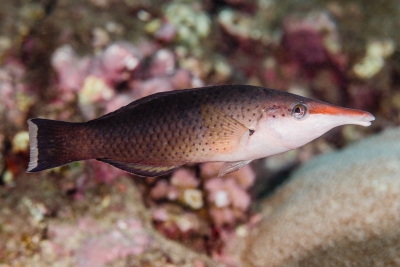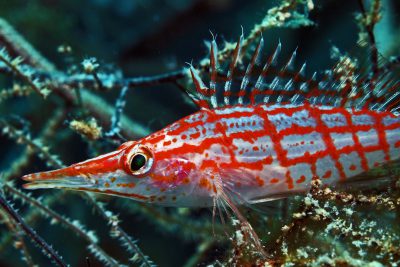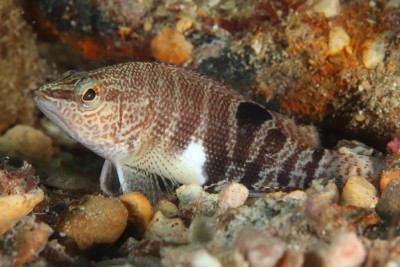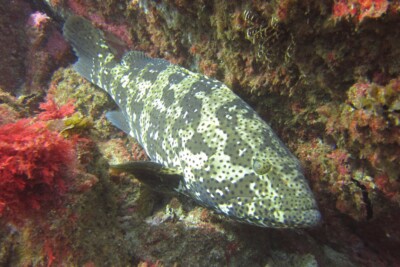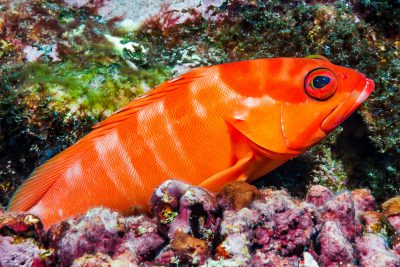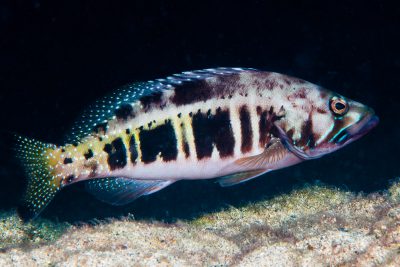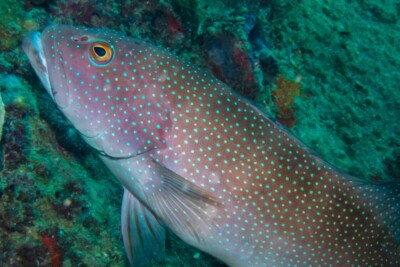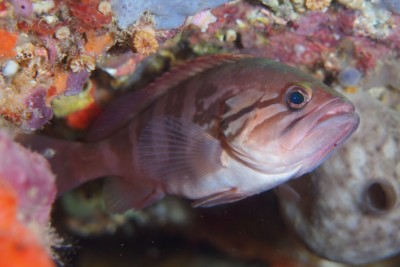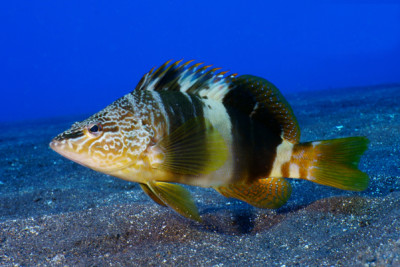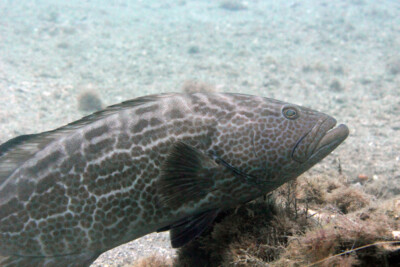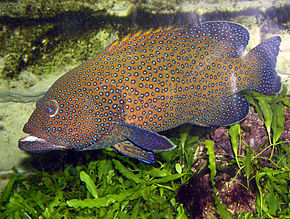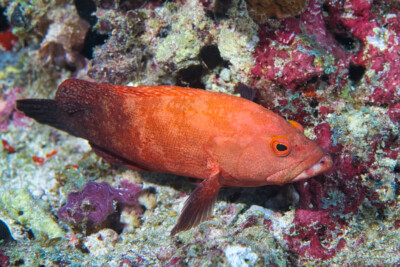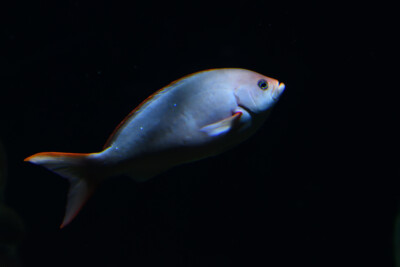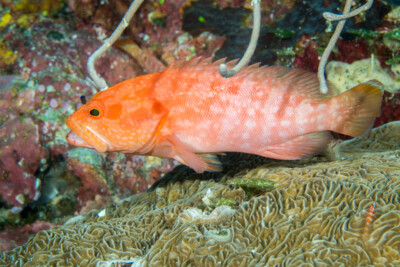Miniatus grouper
| Scientific name | Cephalopholis miniata |
|---|---|
| Descriptor | Forsskål |
| Year of description | 1775 |
| IUCN category (World) | LC |
| Family | Serranidae |
| Genus | Cephalopholis |
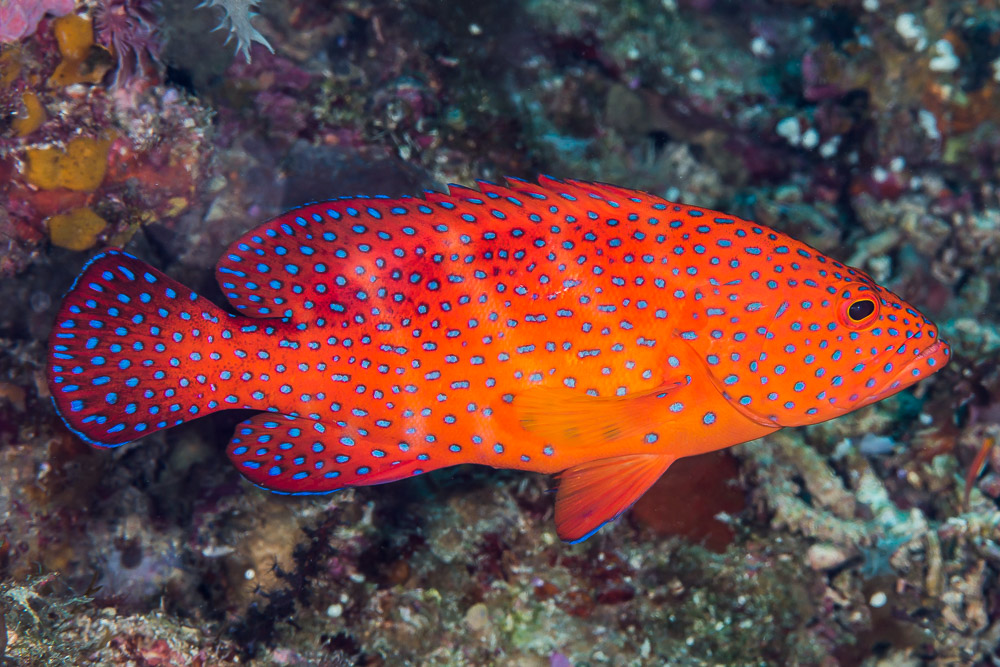

Introduction
Cephalopholis miniata, commonly known as Miniatus grouper, is a salt water fish.
This sheet is currently being prepared. The texts currently proposed come from our data model or are being drafted. To request priority for this content, you can write to us HERE.
Who is it?
Morphology
-
Average size30 cm
-
Maximum size50 cm
-
Longevity25 year
-
Patternponctuations
-
Average size30 cm
-
Maximum size50 cm
-
Longevity25 year
-
Patternponctuations
How to recognize This fish ?
The Miniatus grouper measures around 30 cm. The dominant males can however reach 50 cm. This fish is unicolore with a predominantly rouge body. The also has jaune ponctuations.
Sexual dimorphism
The adult male is bigger than the female.
Behaviour & Life cycle
-
dietcarnivorous
-
Male sociabilityliving in small groups
-
Female sociabilityliving in small groups
-
territorialYes
-
Way of livingdiurnal
The Miniatus grouper is a fish living in small groups naturally found near the rocks. The members of each group are organized around a well established hierarchy. This species is carnivorous .
This species is territorial and does not appreciate the presence of intruders nearby, especially animals with similar behavior. It can also be virulent toward conspecifics. However, the Miniatus grouper has little concern for non-territorial animals.
Reproduction
-
Reproductionovipare qui pond en eau libre
-
PolygamyYes
-
Hermaphroditeprotogynous
The Miniatus grouper is a fish ovipare qui pond en eau libre. In this species, the dominant males are polygamous and reproduce each season with several females. always born female. Growing up, individuals will change sex to become male, this is called successive hermaphroditism of the protogynous type.
Harmless species
This species does not represent any particular threats to humans when encountered in its natural environment.
Origin and distribution
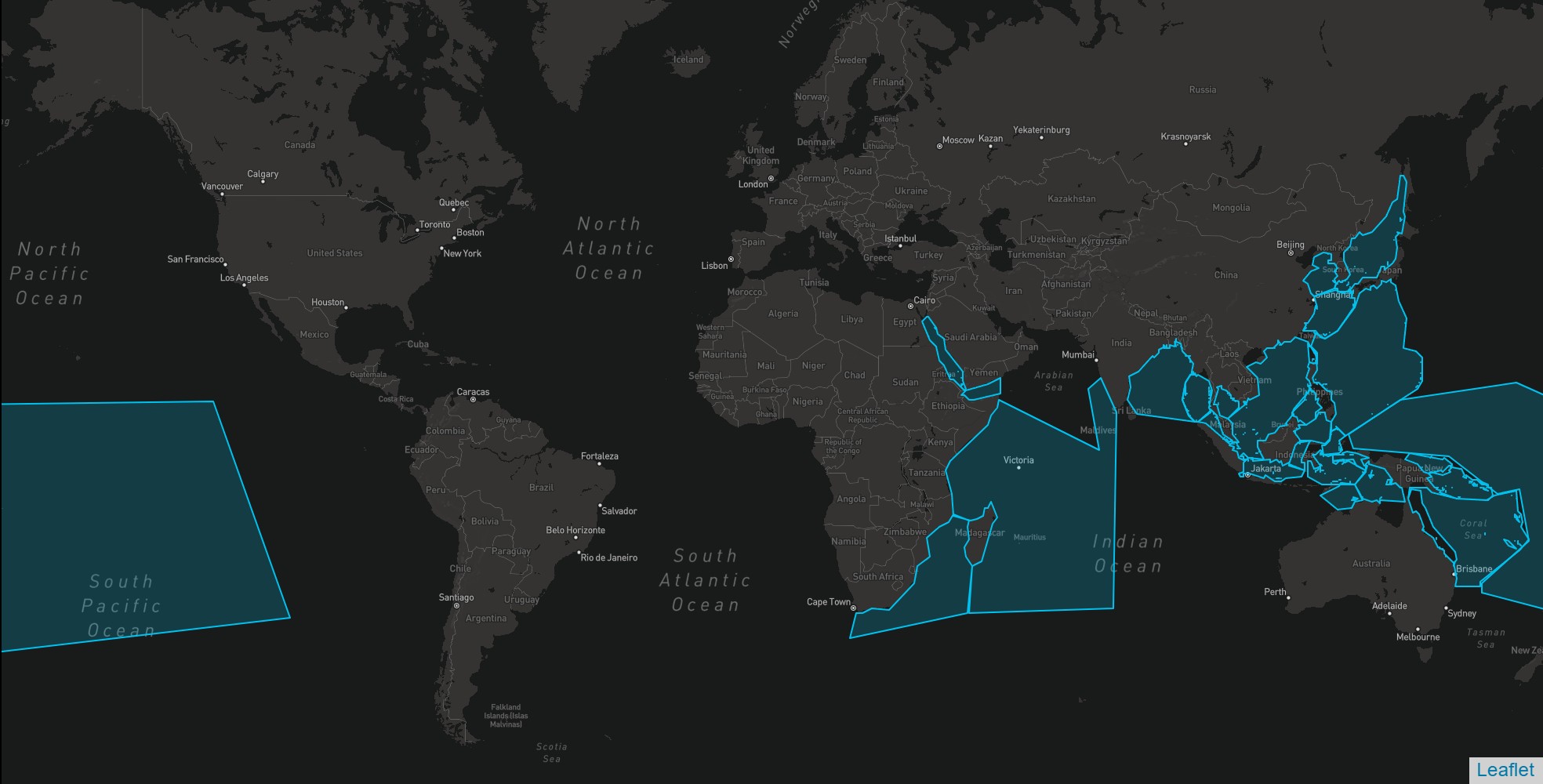
What is its habitat?
Natural environment characteristics
-
Temperature22 - 26 °C
-
Depth2 - 150 m
-
FlowMedium
Biotope presentation
The Miniatus grouper is most often found at a depth between 2m and 150m. However, it is not impossible to find this species at other depths.
Species of the same biotope
Main recommendations for fishkeeping
Deontology
In order to preserve wildlife, if you acquire this animal, it must not be released into the wild. See also, the Fishipedia charter.
Fishipedia supports the practice of responsible and environmentally friendly aquarium keeping. We encourage maintenance if it is motivated by a desire to understand the biological functioning of living things and if it is done with respect for animal life.
We believe that aquaristics is an opening to the discovery of aquatic environments, especially freshwater, and that this knowledge is necessary to better protect and respect these environments. Logically, we refute the compulsive purchase of animals that would not find a sufficient and / or adapted place in the host aquarium.
Our recommendationsThese tips apply to adult species from breeding. With regards to water conditions, wild species or close relatives must be kept under the same conditions as in their area of origin.
-
Min volume1000 liters
-
Population minnot specified
-
Temperature22 - 26 °C
-
pH (acidity)8.2 - 8.4
CharacteristicsThe characteristics below apply for adult species. They correspond to an average of cases, validated in maintenance condition.
-
Difficulty breedingThe farming difficulty is relative. It depends on experiments already carried out with similar species. First, it takes into consideration the robustness of the species, the ease of recreation of a favorable environment and the general behaviour with the other inhabitants of the aquarium.moderate
-
Robustnesstolerant
-
Behaviourslightly aggressive
-
Availabilityoccasional
General reminders
It is strongly advised to read the complete dedicated file and to get information on the feedbacks of maintenance of the envisaged animal, this to avoid any potential conflict whose end result is generally the death of the individual (or the other inhabitants). It is important not to overload your aquarium to limit pollution. This will make maintenance easier.
General reminder on maintenance datas
Le démarrage d'un aquarium est une partie primordiale pour l'équilibre et le bien-être des poissons. Lorsque l'on met en eau un aquarium, l'eau passe naturellement par un cycle biologique : le cycle de l'azote. Celui-ci dure environ trois semaines. Tous les 2 jours, nous vous conseillons de tester votre eau jusqu'à ce que le taux de nitrite soit à zéro pendant plusieurs jours d'affilée.
Pour accélérer ce cycle, vous pouvez utiliser un activateur de bactéries comme JBL Denitrol. Cette solution riche en bactéries vivantes et enzymes permet une mise en place rapide du cycle de l'azote. Les poissons peuvent alors être introduits plus rapidement.
Il est important de tester l'eau de son aquarium régulièrement pour maintenir un environnement sain pour les poissons et les autres habitants. Les tests d'eau permettent de mesurer les niveaux de différents paramètres tels que le pH, la dureté totale, ainsi que les taux de nitrates, de nitrites et d'ammoniaque.
Pour réaliser ces tests, vous pouvez utiliser des produits d'analyse spécialisés tels que JBL ProScan qui permet de réaliser un diagnostic de l'eau directement via un smartphone. Il existe également des coffrets de tests plus classiques de bandelettes, comme JBL PROAQUATEST.
En cas d’usage de l’eau du robinet, vous pouvez utiliser un conditionneur d’eau de type Biotopol de JBL pour éliminer les substances nocives comme le chlore, le cuivre, le plomb et le zinc. Les conditionneurs d'eau garantissent une meilleure santé aux poissons et une meilleure croissance des plantes.
Chlorine and chloramine are dangerous for the health of animals. Used to disinfect water, these agents are present in significant quantities in tap water. We recommend using an anti-chlorine agent every time you change the water. In addition to chlorine, treatments and medicines sold for aquarium use sometimes contain dangerous heavy metals in high doses.
Specific needs for the Miniatus grouper
The Miniatus grouper is a marine species which lives naturally at a temperature between 22 °C and 26 °C. For proper maintenance, the temperature should never exceed the 29°C for long periods. Nitrate levels should remain below 50mg/L. To keep the water clean and unpolluted, plan on changing 20% to 30% of the water volume each month. In seawater, it is also possible to remove nitrates using one of the following methods: Jaubert, denitrator on sulfur, biopeletts, vodka method.
The breeding of this species is accessible on condition of being well informed about its needs in aquarium . Any cohabitants must be chosen with care to avoid the loss of animals.
This species is generally available in specialized shops or from aquarium clubs. Specimens that have been bred for a long time are easier to breed, but special water parameters must be respected.
Formal incompatibilities
Cohabitation & Environment
Being a living in small groups fish, it is advisable to install at least 0 individuals in an aquarium of 1000 liters minimum. Group maintenance is a prerequisite to ensure their well-being. Lonely individuals tend to quickly become stressed and become especially susceptible to disease.
The Miniatus grouper may show signs of aggression. In general, this species should not be mixed with large territorial species or other overly aggressive species, in order to avoid possible stress or even injury.
However, it can coexist with other species with a peaceful temperament and with some slightly territorial neighbors, as far as the volume of the aquarium allows. It is important to avoid that two territorial species share the same living area in an aquarium of insufficient volume.
This fish being polygamous, the male must always be maintained with several females. A ratio of three females to one male seems to be a good compromise for the constitution of the group.
To best reproduce the biotope of this species, you can cover the bottom of the tank with sand and put a pile of stones to form caves.
Tips for feeding
The Miniatus grouper is carnivorous.
This species can eat dry food (flakes, pellets), fresh food and frozen food. To avoid deficiencies, it is recommended to vary the types of food.
You should not overfeed your residents to avoid polluting the water. For most species, it is better to feed a few small portions each day rather than one large meal.
Reproduction protocol
-
egg-laying protectionNo
Hybridization risks
In general, it is advised not to mix several species of the same genus or different varieties of the same species, to avoid the risks of hybridization.
These animals might interest you
To go further
Sources & Contributions
Participation & Validation
The Fishipedia team and specialist contributors are committed to providing high-quality content. However, although the information comes from scientific sources or testimonials from specialists, the cards may contain inaccuracies.

Benoit Chartrer

Théo Guillaume

Adrien Falzon
Translation
Translation done with the valuable contribution of our translators, who make this information available to a wider audience. We sincerely thank them for their commitment.
Bibliographic references
Food habits and prey selection of three species of groupers from the genus Cephalopholis (Serranidae: Teleostei) - Muki Shpigel - Lev Fishelson - Springer Nature - 1989.
Territoriality and associated behaviour in three species of the genus Cephalopholis (Pisces: Serranidae) in the Gulf of Aqaba, Red Sea - M. Shpigel - L. Fishelson - WILEY - 1991.
Length-weight relationship of fishes from coral reefs and lagoons of New Caledonia: an update - Letourneur, Y - Kulbicki, M. - Labrosse, P. - Naga, the ICLARM Quarterly - 1998.
Scientific partners
Tags
#Serranidae
#Cephalopholis
#barrière de corail
#récifs extérieurs
#Bay of Bengal
#Great Barrier Reef
#East China Sea
#Philippine Sea
#Sea of Japan
#Red Sea
#South East Asian Seas
#Indonesian seas
#western Indian Ocean
#Western Tropical Pacific Ocean
#Bali
#Mauritius
#Réunion
#Lombok
#Maldives
#Nusa Penida
Species of the same family
Same genus
Species of the same biotope
